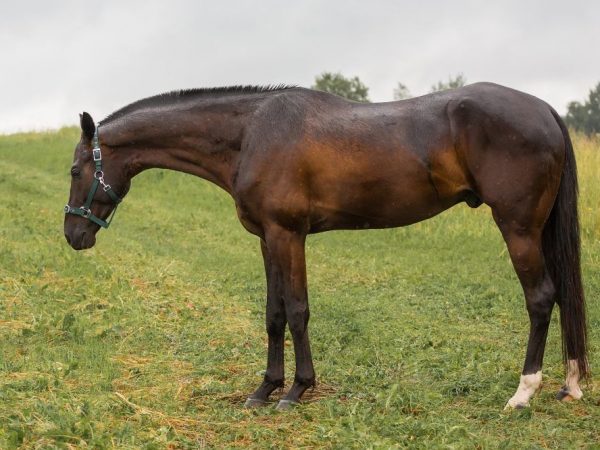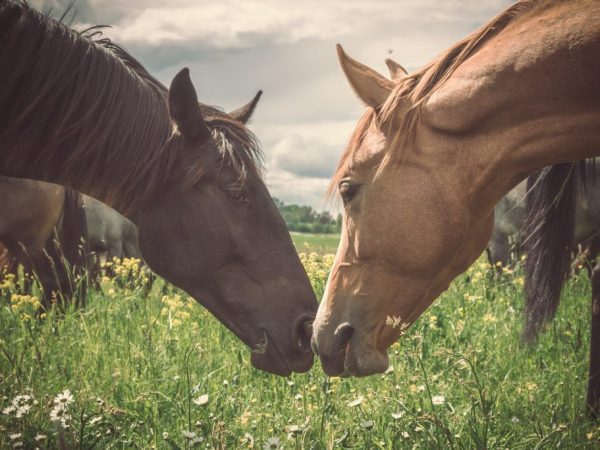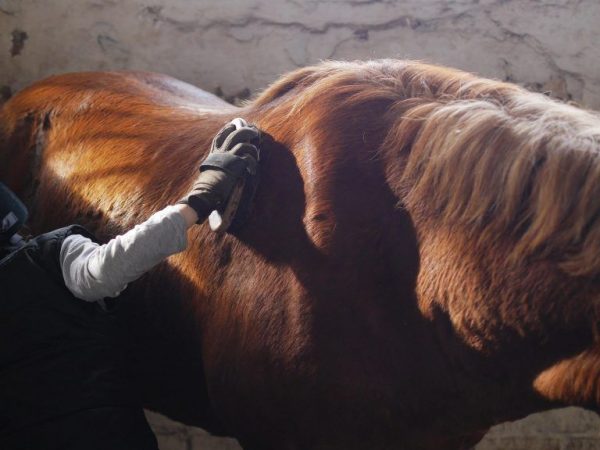Description of horses breed Trotter
Trotters horses are popular due to the fact that they are better adapted to the team than other breeds. The fact that they move at a trot has allowed them to become indispensable in this matter.

Characteristics of horses of the Trotter breed
Trotter is a vigorous variety, and this quality is passed on from generation to generation. It is because of this that the species is most often bred in breeding plants. Having such a horse is a great success, because it will not only become a good helper, but also a loyal friend. The historical place of appearance of the breed is Russia.
History of the origin of the breed
The Orlov trotter is a breed that is best suited for riding and racing. It is often used on racetracks. This breed was bred by the commander of the Russian fleet Alexei Orlov. Breeding began with the gift of a horse to Orlov. After the trotter, they were taken to females of various breeds.
The presented horse did not live even a year, but still he was able to leave offspring. The Danish female gave birth to a foal, which was eventually bred to the Dutch horse. As a result, a baby was born who became a breed producer.
Horse appearance
The bald horse is one of the largest among its congeners. The height of its withers can reach 170 cm. The length of the body is within 160 cm. The size of the belt is approximately 20.3 cm. The volume of the chest is about 180 cm.
Due to the fact that the trotter is a dimensional horse, its weight is about 550 kg. The breed has a harmonious physique. Its head is small and its neck is gracefully arched. The mane is thick, the tail is long and fluffy. Massive muscles and strong legs.

Trotter appearance
Horse breeders often breed Rysakov in order to participate in all sorts of competitions. The main type of suit of these horses is gray, but the animal can also have a black color.
Breeding trotter
A trotter is a horse that develops rapidly, and it can conceive offspring as early as 3 years of age.
The male can take care of his female for a whole year, but most often he is active in the spring. How easily a mare can get pregnant depends on estrus. This process should occur monthly and last from 3 to 7 days. When heat comes to an end, ovulation begins, which lasts for 2 days.
Bringing horses at home can be done in a variety of ways. Most often it depends on the type of content. One mare can have 1 or 2 stallions. At home, the process can be completely controlled by a person.

Horse mating
The main types of mating:
- In the herds. The process takes place as in the wild: the male chooses his own female.
- Manual method. A man picks up 2 horses of different genders and places them in a paddock. The owner can completely control this process.
- Cooking method. 5 mares and one male are placed in the pen. If a trotter constantly sheds one female, it must be removed. And so on until the male pays attention to everyone.
- The artificial method of fertilization depends entirely on the person.The veterinarian comes and launches the stallion sperm into the mare, after which it remains only to wait, if the female does not become pregnant, then the process is repeated again.
To get good horses of the Trotter breed, you need to select only the best males. The rest should be castrated. The same goes for horses that are involved in heavy transport.
What to feed the trotters
The Trotter is an active breed that needs good nutrition and maintenance. Horses are herbivores, so grass and hay are the basis of their diet. But for a trotter to develop normally, it needs about 2 tons of oats, 500 kg of bran and 1 ton of root crops. The trotter should eat salt, which is best mixed with the main food. One horse should gain 13 kg per year.

Trotter food
The breed eats vegetables and fruits with pleasure, so you can safely give its representatives seasonal products. In the warm season, animals can be grazed: this will allow the horse to be accustomed to fresh grass. It is forbidden to graze horses in fields where clover, alfalfa and legumes grow.
The Trotter drinks a lot, so he needs to be given 80 liters of water a day. In general, the amount of food and drink depends on the loads that the horse receives per day. The more there are, the more liquid and food should be in the diet.
Trotter Care
To ride a horse, you need to take good care of it. But this does not mean at all that the horse just needs to be fed and watered.
Trotter care consists of:
- cleaning wool;
- the washing up;
- cleaning hooves;
- horseshoe.
It is necessary to carry out such actions once a week. To clean the Trotter's fur, you need to use a special brush. Moreover, for the mane and tail, it should be hard, but for the rest of the parts - soft. The cleaning of the coat starts from the head and ends with the croup. Such actions must be carried out from two sides.
To comb the trotter's mane, you need to take a comb with small teeth. Some horse breeders braid the horse's mane into a braid. With the tail, you can carry out exactly the same manipulations. When cleaning, you need to carefully inspect the horse for scratches or more serious damage. After training or hard work, the trotter should be wiped with a damp cloth.

Proper care of Trotters
It is recommended to bathe the breed only during the warm period, because in the winter time animals have a high probability of catching a cold. Pay attention to the trotter's hooves: they should also be cleaned regularly. To do this, you need to prepare in advance a stiff brush and a hook with a blunt end.
It is imperative to shoe trotters who work hard or take part in the races. You do not need to do this on your own - you should seek help from a specialist. He will clean the hooves of dirt and kick the horse. A similar procedure is carried out every 1.5 months.
Diseases
A trotter, like any other creature, can get sick. To make a correct diagnosis, you need to seek help from a veterinarian. Only after a series of examinations will he prescribe treatment.
There are some symptoms that every breeder should be aware of in order to provide first aid to the horse.
Diseases are divided into infectious and non-infectious. The most common are:
- tetanus;
- rabies;
- flu;
- anemia;
- gastrofiliasis;
- toxoplasmosis;
- arthritis;
- mastitis;
- cataract;
- abscess.
This is a small part of the ailments that a trotter can undergo, so it is worth carefully monitoring the health of the horses. The reasons for the manifestation of symptoms are different: often horses are poisoned by poisonous plants, fall, get injured, etc. If the pet refuses to eat, his temperature rises, it is worth seeking help from a specialist.
With parasitic diseases, approximately the same symptoms appear. The only exception is the temperature: in this case, it may not rise. Moreover, if a horse falls ill with an infectious disease, an urgent need to contact the veterinary service: such diseases can be transmitted to people and are often not treated.Often, sick cattle are killed and burned.
Conclusion
Over the past century, the variety has changed, its representatives have become more hardy and large. Today, having such a breed is a status indicator. Many are trying to improve this type. Due to the fact that the economic situation is unstable, a number of problems appear, the main of which is that there are not enough stallions for all females. It is necessary to hire a person who can artificially impregnate the girl, and this is time and a lot of money.
Despite all these difficulties, people do not abandon such a breed as a trotter, on the contrary: everyone dreams of having such an animal, because it is suitable not only for hard work, but also for racing.


